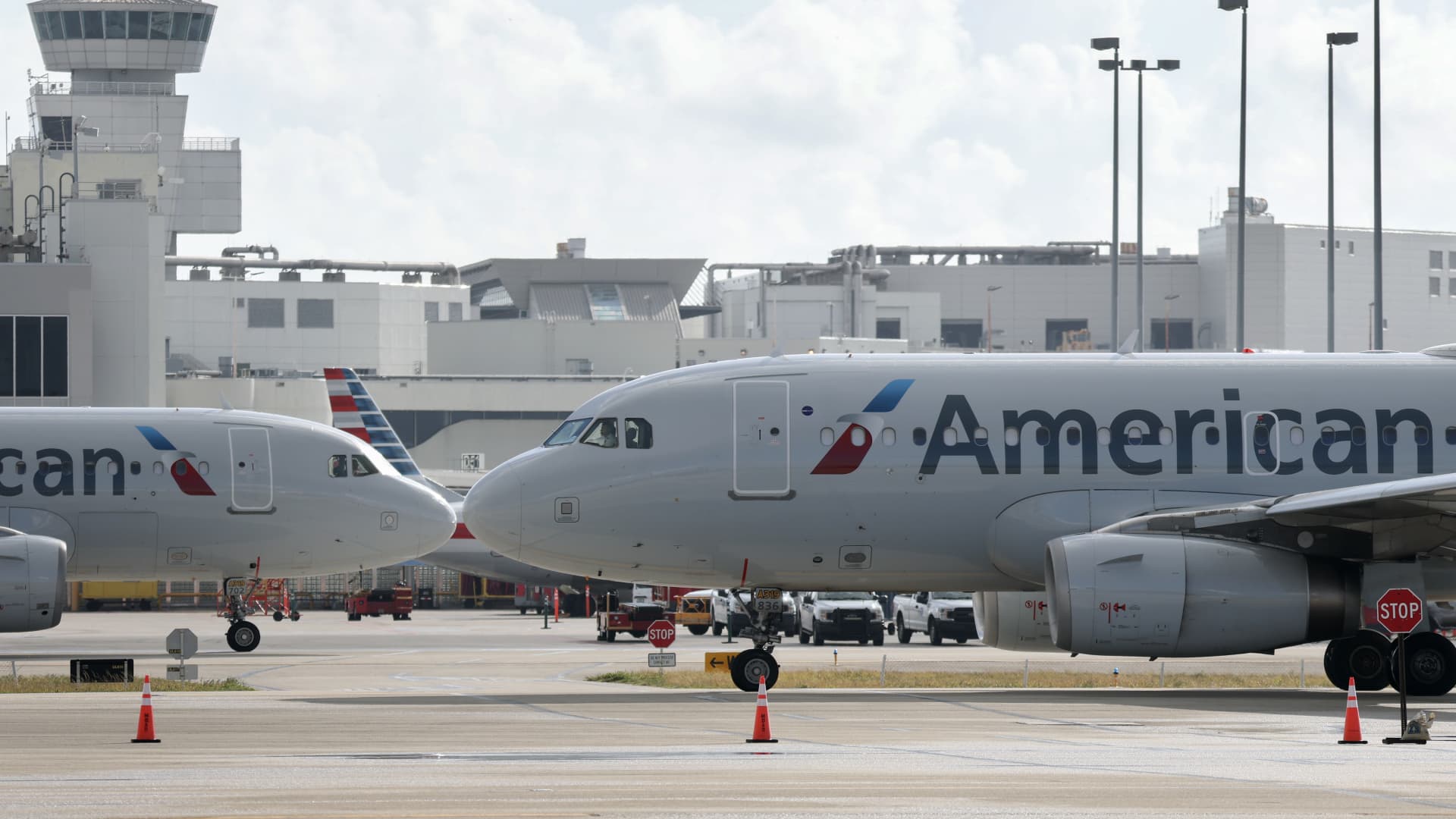American Airlines’ Turbulence: A Deep Dive into the Scaled-Back 2025 Profit Outlook
The Downdraft: Understanding the Revised Projections
American Airlines’ recent decision to scale back its 2025 profit outlook has sent shockwaves through the aviation industry and financial markets. The airline’s revised forecast, which now anticipates a wider range of possible outcomes—from potential losses to modest profits—has raised eyebrows and prompted a closer examination of the factors at play. The company’s adjusted loss per share could range from as low as 20 cents to a profit of no more than 80 cents, a stark contrast to the previously estimated adjusted earnings per share (EPS) of around $2.42. This discrepancy has contributed to investor unease and a subsequent drop in share value, highlighting the need for a thorough analysis of the underlying causes and potential implications.
Headwinds and Turbulence: Identifying the Contributing Factors
Labor Costs: The Price of Workforce Satisfaction
One of the most significant challenges facing American Airlines is the rising cost of labor. The airline has recently negotiated and signed expensive labor contracts with its workforce, which, while crucial for maintaining positive employee relations and operational stability, have inevitably impacted the company’s bottom line. These contracts, intended to improve workforce morale and secure operational reliability, now represent a considerable financial obligation. The increased expenses associated with these labor agreements are expected to put downward pressure on the airline’s profitability in the coming years.
Economic Uncertainty: Navigating Uncharted Skies
Economic uncertainty remains a primary reason for American Airlines’ more cautious outlook. The global economy is subject to various unpredictable forces, including inflation, fluctuating fuel prices, and potential shifts in consumer spending habits. The airline industry is particularly sensitive to economic fluctuations, as both business and leisure travel tend to decrease during periods of economic downturn or uncertainty. This inherent vulnerability makes it imperative for airlines to exercise caution when making financial projections.
Demand Recovery: A Patchy Landscape
While the airline industry has largely rebounded from the COVID-19 pandemic, the recovery has been uneven. Domestic demand has shown resilience, but international travel, particularly in certain regions, remains below pre-pandemic levels. This uneven recovery presents a challenge for American Airlines, which operates a vast network of domestic and international routes. The airline’s profitability is contingent on the overall health of the travel market, and any disruption or slowdown in key markets can have a significant impact on its financial performance.
Fuel Prices: A Volatile Variable
Fuel is a major expense for airlines, and fluctuations in fuel prices can significantly impact profitability. Geopolitical events, supply chain disruptions, and changes in global demand can all contribute to volatility in the fuel market, making it difficult for airlines to accurately predict their fuel costs. American Airlines, like its competitors, is constantly monitoring fuel prices and implementing hedging strategies to mitigate the impact of price increases. However, hedging can only provide limited protection, and sustained periods of high fuel prices can erode profit margins.
Navigating the Storm: American Airlines’ Strategies
Cost Management: Streamlining Operations
American Airlines is focused on identifying and implementing cost-saving measures across its operations. This includes optimizing flight schedules, improving fuel efficiency, and streamlining administrative processes. The airline is also exploring opportunities to leverage technology and automation to reduce costs and improve efficiency. By embracing innovation and adopting best practices, American Airlines aims to become a leaner and more agile organization.
Revenue Optimization: Maximizing Every Flight
American Airlines is working to maximize revenue by optimizing pricing strategies, enhancing ancillary revenue streams, and improving customer loyalty. The airline is using data analytics and sophisticated pricing models to ensure that it is selling tickets at the optimal price point. It is also investing in ancillary revenue opportunities, such as baggage fees, seat upgrades, and in-flight entertainment, to generate additional income.
Fleet Modernization: Investing in Efficiency
American Airlines is continuing to invest in modernizing its fleet with newer, more fuel-efficient aircraft. These new aircraft not only reduce fuel consumption but also offer improved passenger comfort and enhanced operational reliability. The airline’s fleet modernization program is a long-term investment that will yield significant benefits in terms of cost savings, environmental impact, and customer satisfaction.
The Investor’s View: A Flight Worth Taking?
The scaled-back profit outlook has undoubtedly raised concerns among investors, leading to a decline in American Airlines’ share price. However, it is important to consider the situation in a broader context. The airline industry is inherently cyclical and subject to various external factors beyond the control of individual companies. While the near-term outlook may be challenging, American Airlines remains a major player in the industry, with a strong brand, a vast network, and a loyal customer base.
Investors need to weigh the risks and opportunities carefully. The airline’s cost-cutting measures, revenue optimization strategies, and fleet modernization efforts could potentially drive improved financial performance in the long run. However, the company’s exposure to economic uncertainty and volatile fuel prices remains a concern.
A Safe Landing? The Future of American Airlines
American Airlines’ decision to scale back its 2025 profit outlook reflects the complex and dynamic environment in which the airline operates. Rising labor costs, economic uncertainty, and fluctuating fuel prices are all contributing to the challenges facing the company. While the near-term outlook may be uncertain, American Airlines is taking steps to mitigate these challenges and position itself for long-term success. The airline’s cost-cutting measures, revenue optimization strategies, and fleet modernization efforts could potentially drive improved financial performance in the coming years.
Ultimately, the future of American Airlines will depend on its ability to navigate the turbulent skies ahead, adapt to changing market conditions, and execute its strategic initiatives effectively. The journey may be bumpy, but with a clear vision and a strong commitment to operational excellence, American Airlines can chart a course towards a safe and prosperous landing.

